Companies are now moving away from traditional phone systems and embracing cloud-based technologies.
Two major contenders in the unified communication arena are Hosted VoIP vs. Microsoft Teams. While both offer reliable communication capabilities, their architecture, functionality, and integration capabilities differ substantially.
As small and medium-sized enterprises aim to optimize their operations, improve teamwork, and uphold strong cybersecurity measures, it’s essential to comprehend the distinctions between Hosted VoIP and Microsoft Teams.
What is Hosted VoIP?
Hosted VoIP is an internet-based phone system that enables voice communication over the web, rather than using conventional telephone lines. In a hosted setup, a third-party service provider oversees the VoIP servers and infrastructure remotely, enabling businesses to concentrate on their operations without the burden of hardware management.
Key characteristics of Hosted VoIP include:
- Internet-based calling
- Remote server management (hosted by service providers)
- Advanced call features (auto-attendant, call forwarding, voicemail-to-email)
- Scalability without physical infrastructure
- Integration with Customer Relationship Management (CRM) systems
What is Microsoft Teams?
Microsoft 365, previously known as Office 365, integrates seamlessly with Microsoft Teams, a communication platform developed by Microsoft. It combines program integration, file sharing, video conferencing, and chat into one workplace.
Key features of Microsoft Teams:
- Persistent chat and threaded conversations
- Video conferencing and screen sharing
- File collaboration via SharePoint and OneDrive
- App integrations and bots
- VoIP calling through Microsoft Phone System or Direct Routing
Hosted VoIP vs. Microsoft Teams

| Feature | Hosted VoIP | Microsoft Teams |
| Primary Use | Voice communication | Team collaboration + VoIP (optional) |
| Voice Quality | High, with QoS controls | Varies by internet and configuration |
| Setup | Managed by VoIP provider | Integrated into Microsoft 365 |
| Customization | High (extensions, call routing, etc.) | Moderate (via policies & settings) |
| UCaaS Integration | Native | Requires add-ons |
| Security & Compliance | Provider-dependent | Enterprise-grade (via Microsoft 365) |
| Cost Structure | Per-user, per-month + usage | Included in Microsoft 365 plans or extra for the Calling Plan |
| Scalability | Easy to scale up or down | Highly scalable through Microsoft 365 |
Pros and Cons of Hosted VoIP
Pros
- High-Quality Voice Calling: Built for voice; typically delivers superior audio quality.
- Feature-Rich: Offers call forwarding, auto-attendant, voicemail-to-email, and more.
- Vendor Support: Managed by service providers, reducing internal IT burden.
- Hardware Flexibility: Works with IP desk phones or softphones.
- UCaaS Compatibility: Easily integrates with other UCaaS platforms.
Cons
- Separate from Productivity Suite: Not inherently tied to office productivity tools.
- Varied Security Posture: Depends on the VoIP provider’s security protocols.
- Complex Integration: May need third-party connectors for tools like Teams or Slack.
Pros and Cons of Microsoft Teams
Pros
- Built-In Collaboration: Combines chat, video, and file sharing seamlessly.
- Microsoft 365 Integration: Deep linkage with Word, Excel, Outlook, etc.
- Modern VoIP Capabilities: Can act as a phone system with Microsoft Phone System & Direct Routing.
- Enterprise-Grade Security: End-to-end encryption and compliance with global standards.
- Custom Apps & Workflows: Create bots and integrations for tailored business workflows.
Cons
- Voice Isn’t the Core: VoIP is an added feature—not its main purpose.
- Learning Curve: Full feature adoption may require training.
- Call Quality Depends on Configuration: Without Direct Routing optimization, voice quality can vary.
- Costs Add Up: Calling plans and third-party integrations may increase TCO.
Use Cases for Hosted VoIP
Hosted VoIP is best suited for organizations where voice communication is mission-critical, such as:
- Call Centers and Customer Support: Depend on advanced routing and call analytics.
- Remote Service-Based Businesses: Like IT support, legal services, or consultants requiring mobility.
- Traditional SMBs: Who need reliable, scalable voice systems without heavy investment in infrastructure.
- Healthcare Clinics & Financial Services: Where secure, HIPAA-compliant voice calling is essential.
Use Cases for Microsoft Teams
Microsoft Teams shines in environments where collaboration and productivity are paramount:
- Knowledge Workers and Project Teams: Who rely on daily collaboration, video calls, and shared docs.
- Education Institutions: For virtual classrooms, meetings, and group projects.
- Remote/Hybrid Workforces: Where chat, meetings, and calling happen in one space.
- Enterprises in the Microsoft Ecosystem: That already subscribe to Microsoft 365 and want unified communication.
A hybrid strategy that combines Microsoft Teams with a hosted VoIP service to get the best of both worlds could be the best option for certain companies. The ability of Microsoft Teams Integration to bridge the gap between voice and collaboration platforms becomes quite helpful in this situation.
The argument between Microsoft Teams and Hosted VoIP isn’t about which is superior overall; rather, it’s about which is better for you.Hosted VoIP offers a reliable, feature-rich communication channel centered on voice, while Microsoft Teams brings a collaboration-first experience with optional calling features.
Understanding the UCaaS vs. VoIP distinction is key here: if you need full unified communications, either platform (with the right integrations) can be adapted to your use case. Consider your current tools, workflows, IT capacity, budget, and desired user experience before leaping.
As we move into The Future of VoIP, one thing is certain: flexibility, integration, and security will drive decision-making. Smart businesses will choose systems that not only serve their needs today but can scale and evolve with them tomorrow.
Connect with the experts at OmniCaas to get the right solution for your business.


Post a Comment